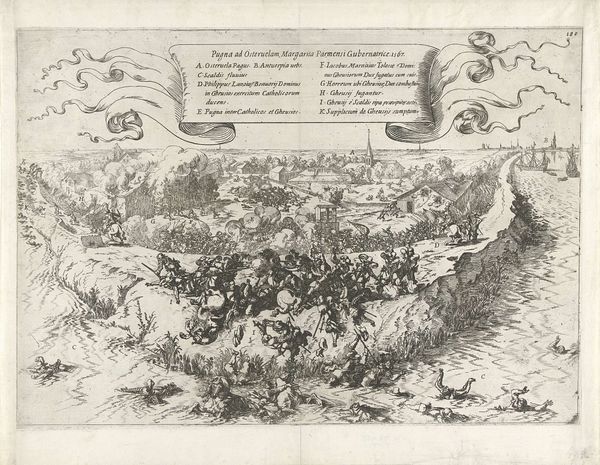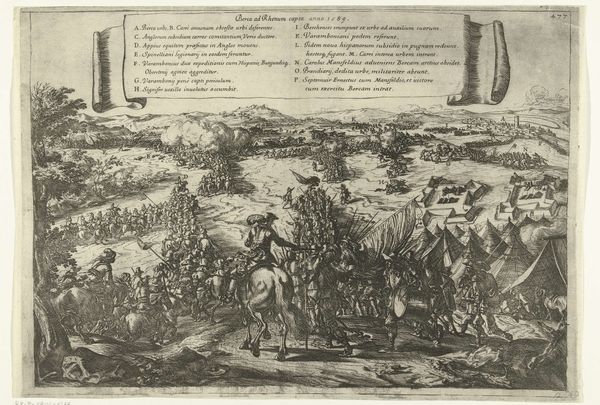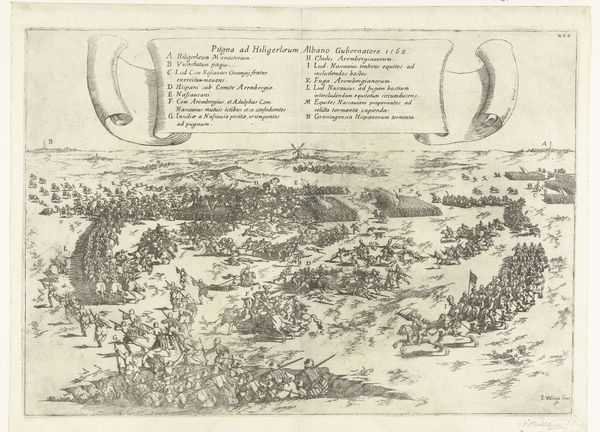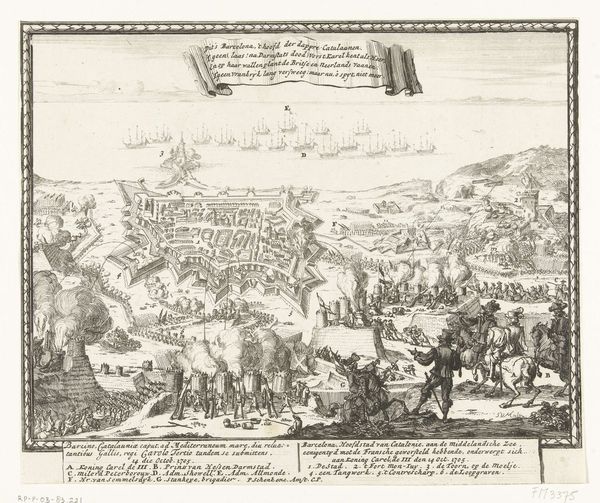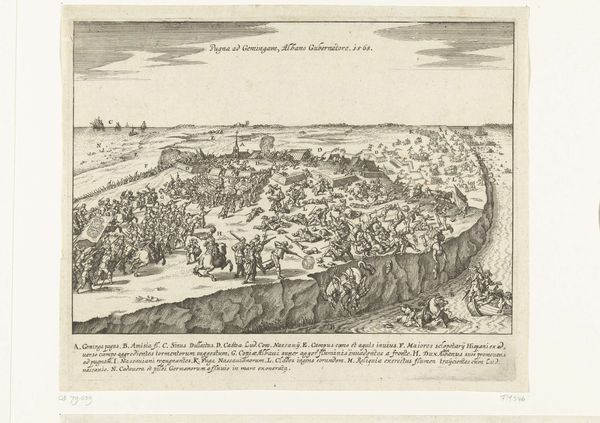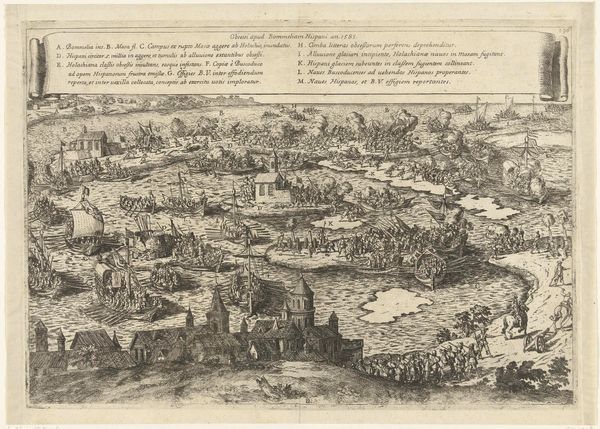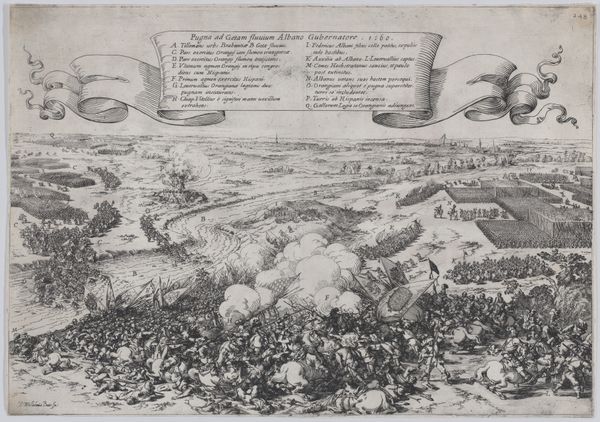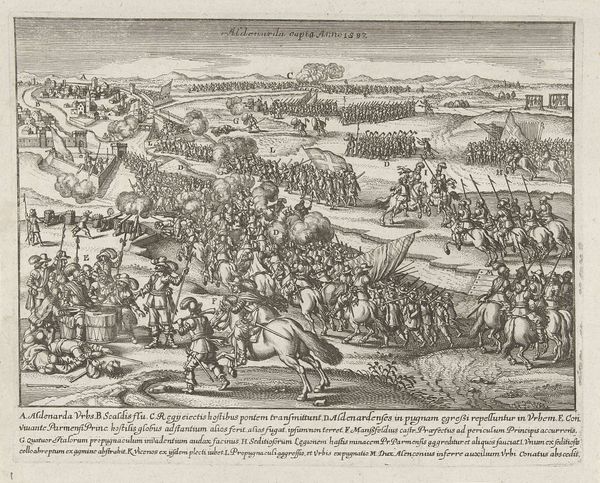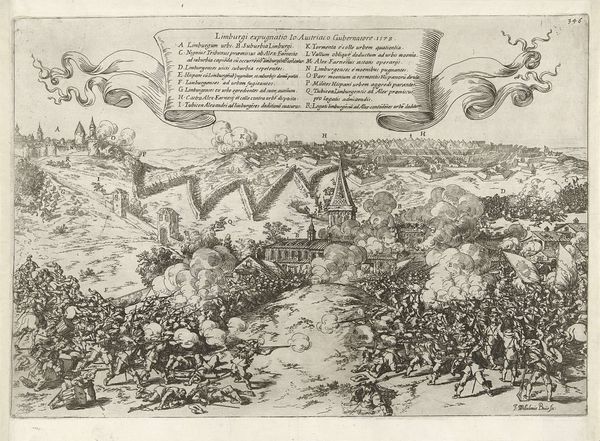
print, engraving
#
baroque
# print
#
landscape
#
line
#
cityscape
#
history-painting
#
engraving
Dimensions: height 307 mm, width 422 mm
Copyright: Rijks Museum: Open Domain
Curator: Let's turn our attention to a scene teeming with energy, a print titled "Veldslag bij Engelen, 1587." Dating back to 1645-1647, this engraving is currently housed in the Rijksmuseum. What's your initial reading? Editor: My eye is immediately drawn to the overwhelming sense of chaos, an elaborate, dizzying composition that seems to vibrate across the surface of the print, creating the effect of actually experiencing it. The scale, particularly, emphasizes the minute details, adding to the sense of disorder. Curator: Indeed. The use of line, typical of baroque prints, serves to amplify this dynamic tension. Note how the lines vary in thickness, creating areas of stark contrast and dense shadow, but do you believe it ultimately organizes the subject to celebrate warfare? Editor: That’s debatable. While the sheer volume of detail may seem to celebrate Dutch strength and conquest, consider that battle scenes like these had specific political purposes, often serving as propaganda. In this context, does the composition promote a specific agenda concerning the Eighty Years’ War with Spain? It seems like the scroll at the top provides context with numbered descriptions, perhaps clarifying narrative priorities of Dutch struggle. Curator: Ah, precisely. But even beyond any specific propagandistic aim, doesn't the print itself, considered as a crafted object, demonstrate the virtuosity of the engraver through a balance between information and representation? Semiotics can aid us here, identifying various conventional indicators such as landscape, figures and textual inclusions. Editor: Agreed, but those figures are also dying and trampling each other—it might just as well be emphasizing the trauma. What is absent—the suffering of ordinary people—speaks volumes. Doesn't it present a rather sanitized view of battle? What do you think is the role of this engraving existing within an institution like the Rijksmuseum, framing the national narrative through curated aesthetics and interpretations? Curator: That framing is integral, though the balanced contrasts serve to visually narrate the push and pull between sides. Thinking formally, I cannot help but note that these techniques have evolved throughout art history, from religious contexts, to still lifes, and landscape—a through-line is certainly there for all who are willing to look for it. Editor: Well, by observing these artworks within a cultural setting—like the Rijksmuseum—the artwork’s social purpose takes precedence in historical consideration. To me, seeing the full narrative intention helps add much more layers. Curator: I will grant you that context is essential, for sure, but without rigorous deconstruction of the components in this scene, that very intention becomes less distinct and less obvious. Editor: And it is equally certain that any single technique or element cannot do the work of the others alone; we each use unique perspectives, with unique benefits.
Comments
No comments
Be the first to comment and join the conversation on the ultimate creative platform.

